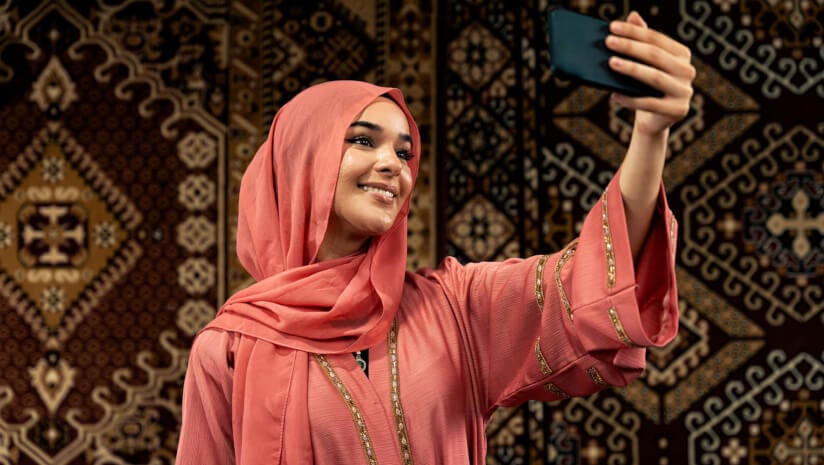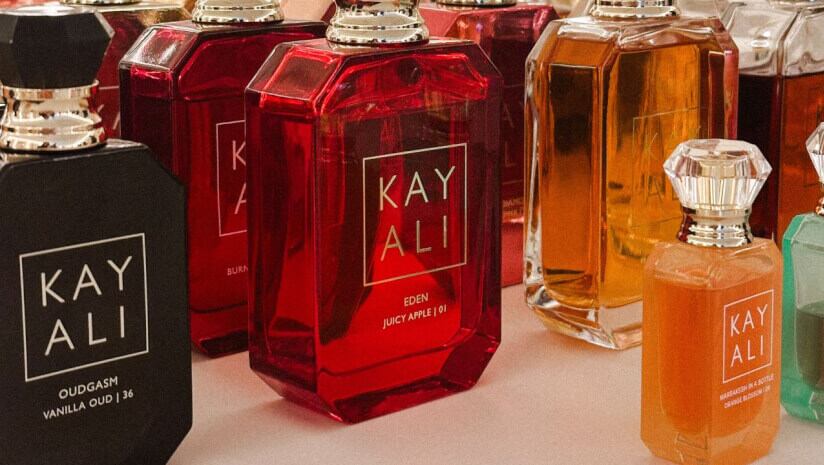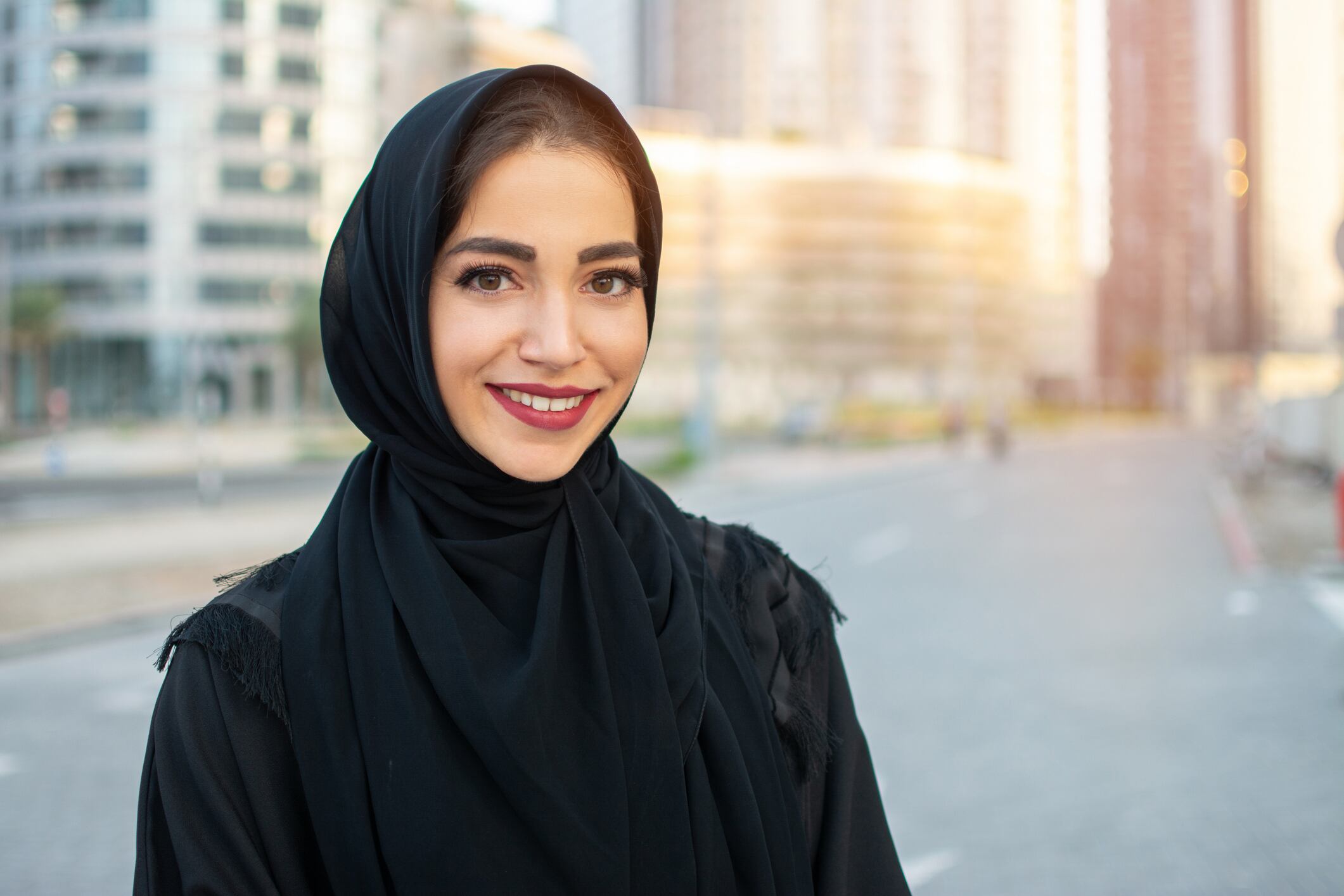Key takeaways
- Science-backed skincare ingredients like retinol and NAD+ are trending, alongside culturally rooted ingredients such as black seed and luban.
- Fragrance remains central to Middle Eastern beauty, with oud and rose symbolising luxury and tradition.
- Consumers embrace both global and local brands, with Arab Beauty gaining traction through cultural relevance and influencer support.
- Brick-and-mortar stores dominate, but e-commerce and social media shopping are rapidly growing.
- Social media platforms like TikTok and Instagram are reshaping beauty engagement and driving conversions.
- The MEA region is forecast to drive global beauty growth, with innovation, tech adoption, and multifunctional products leading the way.
Beautyworld Middle East is set to take place at the end of October, and Amna Abbas, Senior Consultant, Beauty & Health | Luxury & Fashion, MENAT & Pakistan at Euromonitor International, will be speaking at the show on 27 October between 11:45–12:30. She will be discussing The Future of Personal Care: Trends & Shifts to Watch.
In this session, industry experts will break down the key trends shaping the future – what’s fading out, what’s here to stay, and what brands need to focus on to remain relevant and connect with today’s beauty-conscious customer.
Ahead of her appearance at the show, we spoke to Abbas to learn more about these consumers.
CosmeticsDesign-Europe (CDE): What makes a beauty brand worthy in the Middle East market in 2025? What are these consumers looking for in 2025?
Amna Abbas (AA): According to the data analytics company Euromonitor International, the Middle East & Africa beauty and personal care market continues to be a significant one, worth USD 43bn in 2024, reflecting strong 18% growth in current terms (5.1% in constant terms, excluding the impact of inflation).
Middle Eastern consumers continue to be receptive to global, regional, and local brands that provide high value by meeting their beauty and health wants and needs. Hence, beauty brands worthy in the Middle East are those that help maintain consumers’ beauty and health to support a functional, uninterrupted lifestyle, as seen in trends like ‘healthspan plans’.
CDE: Which beauty categories are most popular among consumers in the Middle East?
AA: The most popular categories in the region continue to be skincare, haircare, colour cosmetics, and fragrances. In 2024, categories such as dermocosmetics and fragrances experienced 6% growth, while suncare grew by 4% – globally too, and remained strong in the MEA region, as an aligned global-to-regional trend.
Regional beauty consumers are increasingly drawn to brands that help maintain their skin, hair, and overall beauty in the short, mid, and long term. A broader focus on mental and physical wellness – driven by increased lifestyle stresses – is also driving consumer interest in products that enhance emotional well-being and support daily routines, such as maintaining healthy skin and enjoying pleasant scents, contributing to growth within these categories.
CDE: What kinds of consumer demands and trends are driving product innovation here?
AA: A few of these trends include ‘Healthspan Plans’ and ‘Recession Glam’.
Healthspan Plans is key here. Middle Eastern beauty consumers are increasingly drawn to brands that align with their long-term health goals, choosing products that support overall longevity and well-being. There is a growing emphasis on looking and feeling youthful for years to come. As part of the healthy ageing trend, consumers are seeking scientifically proven ingredients – such as retinol, NAD+ (nicotinamide adenine dinucleotide), and Vitamin E. An example is the increasing popularity of K-Beauty brands that focus on clear and healthy youthful skin, such as the K-Beauty brand Beauty of Joseon – Revive Eye Serum: Ginseng + Retinal.
That said, the theme of ‘Recession Glam’ is also important, as regional beauty consumers become more mindful of their spending. They are prioritising smarter purchases and opting for brands that offer quality without compromising their budget. With a heightened focus on value, consumers are signalling a shift towards more thoughtful consumerism during a time of restrained beauty spending due to ongoing global economic uncertainties.
According to Euromonitor International’s Global Consumer Trends 2025 edition, the ‘Wiser Wallet’ trend highlights how people weigh the worth of their purchases against their priorities, considering both current needs and future demands.
An example includes SHEGLAM, a colour cosmetics brand offering trendy, premium-feel products at affordable prices, launched by fast fashion e-commerce giant SHEIN, which also entered Dubai stores through Landmark’s Centrepoint stores in 2023–2024.
CDE: What kinds of brands are proving popular right now?
AA: Well-established global beauty brands continue to dominate the region, as they diversify and expand by leveraging international beauty concepts to shape their brand identity and connect with their target consumers.
Global beauty concepts such as Asian beauty and Ayurvedic beauty are also quite popular. Asian beauty players – including those from K-Beauty (Korean Beauty) and J-Beauty (Japanese Beauty) – continue to be very popular due to a combination of factors such as effective formulations that work well for regional skin types and media-driven popularity. An earlier example includes the K-Beauty brand Beauty of Joseon, with its suncare product ranges being popular in the region due to formulation variety and relatable ingredients like probiotics from rice.
Arab beauty is also rising significantly in popularity, rooted in culture and tradition and becoming mainstream through brand representation. Influencers continue to celebrate themselves – including their local skin tones, hair types, and more. Examples of such brands include The Camel Soap Factory, Asteri Beauty, and Aiza Beauty.

CDE: What kinds of ingredients are proving popular in this market?
AA: For skincare: Science-backed ingredients such as retinol, vitamins C and E, and NAD+. Natural, organic, culturally oriented ingredients such as black seed, luban, and sidr leaves can also be included here.
Fragrances hold deep cultural and historical significance in the Middle East. They are used not only for personal adornment but also for religious, social, and hospitality purposes. Scents like oud, frankincense, and rose are highly valued, symbolising luxury, purity, and tradition. Fragrances play a vital role in daily life and special occasions, reflecting the region’s appreciation for sensory beauty and its long-standing influence in the global fragrance industry – as seen in brand examples (see right) that embrace local traditions. An example of such a brand is Lattafa Perfumes, a Dubai-born fragrance house that draws deeply from the region’s rich olfactory traditions, blending heritage ingredients like oud, amber, and musk with contemporary perfumery techniques.
CDE: Do consumers in this market generally prefer to buy local brands or international brands?
AA: Both. While international brands continue to dominate the market, regional and local brands are gaining popularity due to their relatability with consumers’ preferences, skin tones, and hair types – as well as their connection to culture and tradition.
The theme of Arab Beauty (A-Beauty) is also becoming popular. A-Beauty strategies highlight popular social media platforms (eg WhatsApp, Instagram) and influencers that foster regional and national identities, strengthening authenticity for A-Beauty brands. This has driven local influencers to celebrate pride in their cultural traditions and promote local brands and popular styles.
CDE: Do they prefer shopping in brick-and-mortar stores, e-commerce, or social media shopping?
AA: While brick-and-mortar stores continue to dominate the regional market, e-commerce and social media shopping are seeing very positive growth.
Consumers want convenience when it comes to shopping, through a holistic omnichannel approach. Hence, brands should ensure strong presence and accessibility, allowing consumers to shop anywhere, anytime.
CDE: Does social media generally have much influence on shoppers here?
AA: Regional beauty brands are increasingly focused on enhancing consumer engagement by encouraging users to spend more time on their apps and explore deeper video content, fostering brand loyalty through continuous interaction.
Consumers are seeking immersive, entertaining, and shareable beauty experiences that also offer a sense of community. This content-centric approach is reshaping beauty distribution. Between 2019 and 2024, retail e-commerce recorded the fastest growth among beauty and personal care channels in the region.
Social media platforms are playing a growing role in consumers’ decision-making journeys, driven by short-form videos and live-selling formats that have proven highly effective in boosting engagement and conversion.
An example includes UAE-based brands like Kayali fragrances and Ahmed Al Maghrabi (an Arabian fragrance brand), which are effectively connecting with Zillennials (Millennials and Gen Z) through platforms like TikTok and Instagram, creating relatability between their brand and their consumers.

CDE: How have the needs and demands of shoppers in the ME markets changed in recent years?
AA: The beauty and personal care industry is poised for significant growth and opportunity, as consumers now place greater emphasis on long-term beauty and health than ever before.
The Middle East & Africa region is expected to be a key driver of global growth, with categories like dermocosmetics, fragrances, and skincare being explored through trends such as healthspan plans and recession glam.
Despite global economic uncertainties, countries in the Middle East & Africa are expected to drive growth, supported by strong consumer demand and government initiatives – including the incorporation of tech and AI, and high internet penetration, especially in GCC countries such as the UAE, Saudi Arabia, and Qatar.
There is also strong presence and acceptance of international, local, and regional brands, encouraging businesses to further expand their footprint in the region.
Businesses catering to the Middle East should adopt multi-tiered pricing strategies and drive innovation by offering multifunctional, bioscience-backed beauty products in their portfolios. They should also implement human and cultural connections through digital content and immersive storytelling to meet consumer demands in this dynamic industry.

